Editor’s note: Thanks to all those who made the effort to nominate this year’s “People to Watch.” And thanks to our supply chain leaders, who share their insights and experience with The Journal of Healthcare Contracting readers this month.
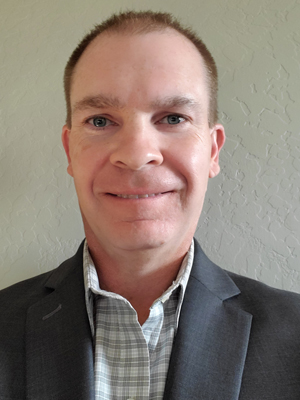
Mike Halmrast
Senior director of contracting at Banner Health
The Journal of Healthcare Contracting (JHC): What is the most challenging/rewarding project you have worked on in the last 12-18 months?
Halmrast: A couple years ago Banner formed a regional group purchasing organization called Supply Chain Value Network. This has been a great opportunity for us to build essentially a new business for Banner and bring significant new revenue into the organization.
JHC: What project or initiative are you looking forward to working on?
Halmrast: Banner implemented new tools in the contract management area in late 2019. I am looking forward to getting back into reviewing the data we now have available in those tools to uncover more savings and standardization opportunities for Banner.
JHC: How are you better at practicing your profession than you were 5-10 years ago?
Halmrast: The data that we have access to today compared to 5-10 years ago is drastically different. This data allows us to make more informed decisions, be more proactive and more responsive to the needs of the customers within our facilities.
JHC: What lesson or lessons do you think supply chain leaders will take from the COVID-19 pandemic?
Halmrast: If you think you are prepared for a pandemic you likely aren’t until you actually experience the situation. Often times the work that we have done to prepare for a pandemic tends to be outdated once the time comes to utilize the info. So we need to constantly update our information and spend more time preparing for future pandemics.
About
Halmrast is a graduate of North Dakota State University with a degree in accounting. He began his journey with Lutheran Health Systems based in Fargo North Dakota as an intern in supply chain in 1996. Shortly after he was able to land a full time position within contract administration. Through the merger of Lutheran Health Systems and Samaritan Health System to form Banner Health he relocated to Phoenix, Arizona. Halmrast transitioned into the procurement area of supply chain where he was the director of purchasing for approximately 10 years and in that time led the centralization of purchasing for Banner. For the last seven years he has been leading the contracting efforts for Banner in his role as senior director of contracting. In those seven years his team has generated greater than $200 million in cost savings for Banner, expanded global sourcing of products, and formed a regional group purchasing organization called Supply Chain Value Network.
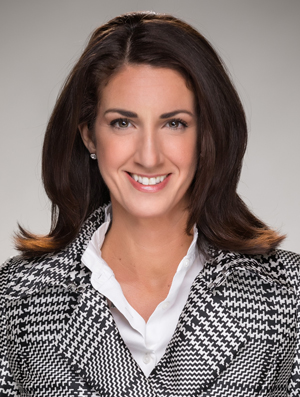
Marisa Farabaugh
BS, MBA, senior vice president and chief supply chain officer, AdventHealth
The Journal of Healthcare Contracting (JHC): What’s the most challenging or rewarding project that you’ve worked on the last 12 to 18 months?
Marisa Farabaugh: COVID-19. How can you not call that both challenging and rewarding? From a challenge perspective, we’ve had to re-engineer all our processes around sourcing and even logistics – overnight.
When your traditional resource streams are rocked, the need for supplies and keeping our clinical teams safe doesn’t change. The responsibility for ensuring our patient care and clinical care shifts in a more acute way for us as sourcing leaders to find new streams of resources, or whatever it would be that we’re trying to source.
Going into that was a great unknown. We were used to working with vendors, partners and suppliers who we’ve had relationships with, and we’ve seen their faces and talked to them multiple times and worked through many opportunities and incremental changes over the years. Suddenly, we’re asked and required to reach out to unknown brokers, distributors and people who are friends of people and may know somebody through the hospital and put together purchase orders on new companies. We put new companies in our systems to be able to create a purchase order, then generate a purchase order with very limited information about that organization. We had a vetting process we were using to make sure these organizations were legitimate and real.
I’ve talked about challenges, but there was so much in terms of reward too. We’re in an industry where we believe in helping other people and being a part of something that’s bigger than just profit or margin. We picked healthcare because it connects us. We feel connected to the work that we do, because there are people on the other end of the work that we do. We’re helping people do their jobs to help people.
JHC: What project or initiative do you look forward to working on?
Farabaugh: This season is going to be a part of our world. There’s going to be many organizations that put a spotlight on COVID-19 for a temporary time and then naturally migrate back towards the traditional contracting, logistics way of supply chain that was pre-COVID-19.
But I also think there’s going to be some organizations that say no, this has happened, and it has raised supply chain and the need to know where our resources are coming from, how we can de-risk the model, what we’re willing to do and not do as an organization to give capital or invest in this change, because we recognize that it’s a weak link or if it’s broken, we can’t do what we need to do. So, we’ve got to invest in it and make it stronger.
When you ask about what are the projects in the future that I look forward to in the wake of this, it’s the ability to strategically think about healthcare supply chain in a new way. And I think I know parts of what that means today, but I promise you I don’t know all the parts yet, but I will as the months and weeks unfold and get more time to digest and think about it.
But in this moment, we’re going to think about de-risking supply chain. Does everything come through single channels? How do we think about sole sourcing? How do we think about and know where products are being manufactured? How do we create a risk profile like an investment portfolio?
JHC: What lesson or lessons do you think supply chain leaders will take from the COVID-19 pandemic?
Farabaugh: There’s a silver lining to everything that has happened. It has catapulted healthcare supply chain to the forefront of discussion. Let’s seize this opportunity to make meaningful changes to our industry that have a sustained impact on a stronger supply chain.
Is Just-In-Time the right model? It works in many other industries. But if you’re in food and beverage and you run out of supply, there is not a life at the other end. Whereas in healthcare, you’re taking care of patients. So, is Just-In-Time the right model?
JHC: How do you think you’re better at practicing your profession than you were 5-10 years ago?
Farabaugh: The people are the most important thing. Creating environments and teams that thrive is such a big focus of mine now. Maybe 10 years ago I was more focused on project execution. Today I’m much more focused on how the team is performing. Where are they at? Who’s in what role? How are we going to move forward post-COVID-19? How does our organizational structure change? Do we need additional support in areas that weren’t there before?
My biggest focus has been around relationships with our team and then building a network of relationships both internally within AdventHealth, and externally.
About
Marisa Farabaugh is senior vice president and chief supply chain officer for AdventHealth. In this role, she is responsible for all aspects of supply chain within the system, including contracting, field operations, data and analytics, value analysis, affiliates program, corporate pharmacy and RxPlus, and corporate construction management.
Farabaugh joined AdventHealth in July 2019. Prior to this transition, Farabaugh held several roles within healthcare supply chain, most recently as the chief supply chain officer for Wake Forest Baptist Medical Center in Winston-Salem, North Carolina. During her time at Wake Forest, she also served as head of the M&A and led the organization through major corporate initiatives including an overhead study. Prior to joining the healthcare industry, Farabaugh worked as an industrial engineer at The Hershey Company in Hershey, Pennsylvania.
Farabaugh received her bachelor’s degree in industrial and systems engineering from the University of Florida and her MBA from Pennsylvania State University.
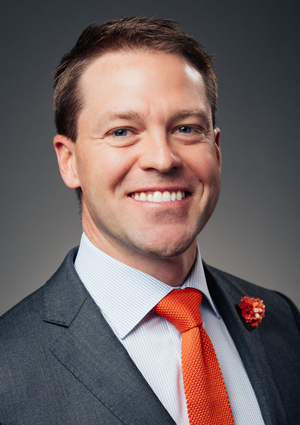
Chaun Powell
MBA, group vice president, strategic supplier engagement, Premier Inc.
The Journal of Healthcare Contracting (JHC): What is the most challenging/rewarding project you have worked on in the last 12-18 months?
Chaun Powell: Leading Premier’s disaster response and preparedness efforts for 4,000 hospitals and 175,000 other providers during the COVID-19 pandemic has been both challenging and rewarding. During the outbreak, despite an extremely strained supply chain and the lack of manufacturing availability, my team and I have worked tirelessly to secure critical supplies for long-term care and senior living facilities who were shut out of traditional ordering due to protective allocation. I’m particularly proud of this because the senior nursing and assisted living facilities have been some of the hardest-hit care sites, but traditional ordering methods may not have secured them the supplies they desperately needed to care for a very vulnerable group in the community. I also helped craft the playbook that laid the foundation for The Private Sector COVID-19 Supply Chain Coalition.
JHC: What project or initiative are you looking forward to working on?
Powell: At Premier, I am fortunate to be able to work with various stakeholders within the healthcare industry to continue to improve the supply chain. This includes working with federal agencies to improve upstream visibility in several categories including raw material origin, contract manufacturers and sterilization facilities, among other areas. I also have the privilege of working with the private sector to create industry standards for product disruption notifications.
As I mentioned, my experience leading the COVID-19 response has been challenging but has also given me a clear pathway to my next project. I am hyper-focused on modernizing and increasing the sophistication of the healthcare supply chain. This effort includes increasing visibility, identifying areas of vulnerability, and introducing safeguards and creating a balance between onshore and offshore manufacturing. These efforts aim to improve supply chain sustainability while maintaining low costs, which is of particular importance now.
JHC: How are you better at practicing your profession than you were 5-10 years ago?
Powell: Since becoming a leader in Premier’s supply chain strategy, I’ve come to value differing perspectives and the unique points of view people bring to problem-solving more than ever. As a professional, it is so important to have the ability to harness skills from different facets of your career and make them applicable to your current responsibilities. I’ve been working in the healthcare industry for nearly 20 years and have a profound understanding of the supply chain from both the provider and supplier perspectives. All of my experiences have shaped the way I define success, not only in my personal life, but also in my current role.
JHC: What lesson or lessons do you think supply chain leaders will take from the COVID-19 pandemic?
Powell: COVID-19 presented the healthcare industry with an unprecedented set of problems and exposed major issues within the supply chain. My biggest takeaway is ensuring that we have a sophisticated supply chain capable of enduring smaller disruptions or large-scale pandemics like this in the future.
For years, the industry has used expense reduction practices, creating an extremely lean supply chain system. However, this lean system resulted in an inability to produce a sustainable supply of PPE, which was desperately needed during the COVID-19 pandemic,
resulting in major financial losses. I am eager and ready to work alongside key industry leaders to develop new best practices and introduce necessary improvements and changes to ensure the long-term success of the healthcare supply chain.
About
As group vice president of strategic supplier engagement at Premier, Powell is responsible for $960 million in revenue and $60 billion in healthcare spend across 4,000 hospitals and health systems and 175,000 alternate sites (e.g., physician offices, imaging centers, etc.) across the United States. He also leads the disaster preparedness and response program and the product disruption team, and drives strategic growth plans and tactical implementation across Premier’s supply chain unit. Since joining Premier in 2017, Powell and his team have driven more than $50 million in growth over the last year.
Powell led disaster preparation and response for Hurricanes Harvey, Irma, Michael, and Florence, as well as managed Premier’s disaster response through the Las Vegas shooting, Puerto Rico earthquakes and the Cardinal Health surgical gown recall. He is also currently leading similar disaster preparedness, activation and response efforts for Premier through the COVID-19 pandemic.
Prior to joining Premier, Powell was the national director of sales and business development for Orthopedics at Cardinal Health where he led a team of nearly 300. Under his leadership, the division saw a 242% increase in profitability.
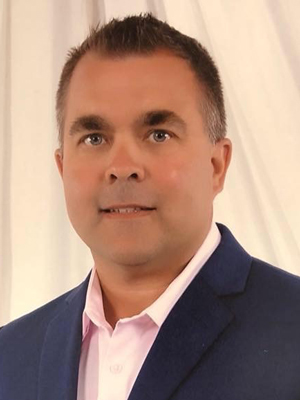
Chuck Jensen
Director of sourcing & contracting, Froedtert Health
The Journal of Healthcare Contracting (JHC): What is the most challenging/rewarding project you have worked on in the last 12-18 months?
Jensen: For me, personally and professionally, the one thing that has provided me the most satisfaction has been my growth journey (my Hero Quest). A series of events, including new leadership, a major departmental restructuring as well as personal challenges, led me to seek a career coach, which I began working with in the fall of 2018. That fall, the framework for a year-long engagement was developed. Some early activities in 2019 included baseline data gathering from an employee engagement survey and targeted data from a 360-degree leadership review. The data received provided themes for targeted improvement. The themes were personal connection, communication and respect.
The journey led me to a greater sense of self reflection, love and caring for others and recognition of others (putting others ahead of myself). The results have been nothing less than amazing. My connections with others have increased tremendously. The team – both my leadership and the entire team – has become more engaged. In fact, the score from the 2020 employee engagement represents some of the highest scores within the organization. The benefits go far beyond the department. My interactions with physicians and others I interact with have also strengthened. This was an extremely challenging journey as it requires personal reflection and the willingness to hear feedback that generates emotional responses. This remains the most challenging, but rewarding, experience in my recent history.
JHC: What project or initiative are you looking forward to working on?
Jensen: I have been a part of developing a Strategic Partner Council (SPC) at Froedtert Health. The SPC is made up of senior leaders from Froedtert Health’s top suppliers as well as key leaders from the supply chain, finance and surgical services teams. The SPC’s goal is to work towards best practice solutions for the mutual benefit of all organizations. I am looking forward to this because the group, although formed and meeting regularly, is between the storming and norming phase in group development. (Editor’s Note: The forming-storming-norming-performing model of group development was developed by Bruce Tuckman, who said these phases are all necessary and inevitable in order for the team to grow, face up to challenges, tackle problems, find solutions, plan work and deliver results.)
I am excited to work on team projects. One currently starting is the development of a supplier scorecard. This will be made of metrics developed and agreed by all suppliers with goals and standards also set by the entire council. This will set the standard for how all suppliers will be measured collectively and change how we do business with all suppliers, not just the SPC members.
JHC: How are you better at practicing your
profession than you were 5-10 years ago?
Jensen: I have learned patience, the ability to utilize relationships and the value of personal connections.
Regarding patience, I am naturally driven and hardworking. I want to get all my goals (savings, processes and strategies) completed in the first month of the year. But I have learned to purposely plan for the achievement of goals or a project. This has allowed me to teach my leaders and staff the skills I have and delegate projects to them. This, in turn, speeds up the results and provides learning and accomplishment of others, and then recognition for them.
Relationship utilization is a practice that I have developed over time. For me, it involves listening to others perspective and coming up with a decision or pathway that meets the needs of everyone involved. Five to 10 years ago, I may have approached situations with more stubbornness and my solution or pathway was the one I would hold firm to as the sole choice. My current approach has been rewarded with relationships and positive outcomes from my team and those I work with throughout the health system.
Historically, personal connections have not been my strong suit. While I have always been good at relationships with a few close confidants, I have learned to be caring and thoughtful towards all those I work with and interact. I am not always successful, but I realize it when I’m not and look to find ways to strengthen and improve the relationship. Almost always, that involves a face-to-face meeting or phone conversation.
JHC: What lesson or lessons do you think supply chain leaders will take from the COVID-19 pandemic?
Jensen: There are a few lessons that I personally have learned and suspect most supply chain leaders also have learned during the COVID-19 pandemic. First, the connections to local businesses and physician partners proved extremely valuable. For example, at Froedtert Health, a handful of local businesses worked with us to develop and quickly change their production lines to produce hand sanitizer, face shields and masks.
Secondly, we have opened non-traditional channels for sourcing products. Froedtert Health utilized direct purchasing or a broker to secure where our distributor, regional GPO or normal supply partner was not able to meet our PPE or other supply needs. This may translate into longer term relations with those sources that proved reliable and serve as a secondary source moving forward.
Finally, communicating key data internally is so valuable. Froedtert Health Supply Chain developed a supply dashboard and distributed it to the organization daily. This dashboard provided a color-coded system to communicate the levels of PPE available. This provided transparency in an environment of fear and information overload from internal rumor and external media on the pandemic. Froedtert Health was fortunate to not have run out of any PPE during this critical time and, in large part, the data and subsequent conservation methods were to credit.
About
Chuck Jensen has served as director of sourcing & contracting at Froedtert Health in Wisconsin for the last five years. Within this role, he leads the purchasing team as well as the sourcing/contracting team. Jensen developed and led a major departmental restructuring 18 months ago that dramatically improved the capabilities and results of the department. Previously, Jensen served as director of supply chain at Comanche County Memorial in Lawton, Oklahoma, and director of materials management at McLaren Northern Michigan in Petoskey, Michigan.
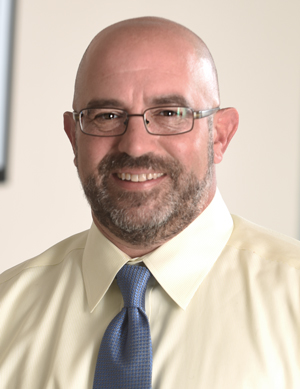
Andy Klearman
CEO of MediGroup Physician Services
The Journal of Healthcare Contracting (JHC): What is the most challenging/rewarding project you have worked on in the last 12-18 months?
Klearman: The most challenging project I have worked on over the past 18 months has been writing and implementing a new long-term channel partner agreement with Provista/Vizient since they purchased our old channel partner MedAssets. MediGroup and Provista completed our agreement and it has been very much worth the effort.
The most rewarding project I have been a part of during this time frame is the development and implementation of our charitable foundation MediGroup Cares. This is where the company MediGroup and our employees come together and support many charities and charitable events, including participation in firefighter fundraisers, sending our folks to Puerto Rico to help with the hurricane relief, and providing multiple donations to the charity Provision Packs that sends kids that otherwise would not have food for the weekend home with backpacks filled with food for the entire family.
But I am most proud how MediGroup is sponsoring free surgery for qualified veterans that could not afford the surgery for themselves and the VA is not stepping up for one reason or another. We performed our first surgery this past year which was a great success and we are working very hard on expanding this program.
JHC: What project or initiative are you looking forward to working on?
Klearman: MediGroup is working on enhancing our aggregated and exclusive contract portfolio. This provides our members with significant price advantages and helps them lower the cost of delivering healthcare. MediGroup is also advancing our communications capabilities which has been very important in our being able to inform our members on what we learn about COVID-19.
JHC: How are you better at practicing your profession than you were 5-10 years ago?
Klearman: Communication between MediGroup and our members as well as our vendor partners has improved significantly. This allows us to bring so many additional benefits to our members and contracted vendors. This is a big focus for MediGroup for the year 2020 and we have many more advancements to deploy.
JHC: What lesson or lessons do you think supply chain leaders will take from the COVID-19 pandemic?
Klearman: Perhaps there needs to be more domestic manufacturing for PPE and pharmaceuticals that are crucial to treating this type of pandemic. We also experienced that when a lot of non-acute healthcare practices starting shutting down a lot of the PPE and drugs supplies were converted to the hospital and LTC/nursing home markets. Now that the non-acute facilities are starting to reopen they are having to scramble to get the supplies necessary to run their practices. I think they will be more prepared for that if there is another pandemic.
About
Andy Klearman is the CEO of MediGroup Physician Services, one of the nation’s largest GPOs focused on servicing the non-acute/alternate site healthcare market. MediGroup also services the business and hospitality markets. MediGroup is channel partners with Vizient under the arm of Provista. MediGroup is Provista’s largest channel partner servicing these markets. Klearman’s role as CEO largely comprises overseeing the four pillars of the company – operations, sales and marketing, contract optimization and contracting.
Prior to starting up MediGroup in 1999, Klearman worked 10 years as director of governments sales for Midwest Medical Supply which is now part of the Concordance Medical merger. As director of government sales, his division was awarded several prime vendor territories with the Department of Defense. Klearman also managed the company’s Guam warehouse which serviced overseas bases as well as the local hospital and healthcare market.
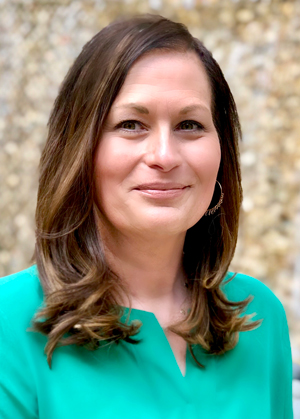
Margaret Steele
Vice president of sourcing operations, Vizient
The Journal of Healthcare Contracting (JHC): What is the most challenging/rewarding project you have worked on in the last 12-18 months?
Margaret Steele: No question, it’s been working collaboratively with the 70-plus person team at Vizient that has been focused on supporting Vizient member hospitals as they confront COVID-19. The last 12 weeks have been nonstop, and this group has been incredibly creative and bold in finding and presenting new solutions for our members that include valuable Vizient contract protections. This includes vetting countless suppliers promising available PPE products as well as expanding current supplier offerings, sourcing through alternative suppliers and/or providing support for expanding manufacturing lines. I’ve never been more proud to work with and be part of such an amazing team and this experience will definitely change how we approach sourcing as we look to do our part to create a more resilient health care supply chain.
JHC: What project or initiative are you looking forward to working on?
Steele: Vizient is so much more than a GPO. I’m excited about continuing to evolve our relationships with members and suppliers so that our conversations are much more strategic and not just focused on price. We want to work together to improve supply chain resiliency and better connect products to clinical outcomes. When we each bring our best forward, it’s amazing the types of innovative programs we can offer to Vizient members. Performance improvement requires data and analytics, deep expertise and innovative conversations moving us lightyears ahead of traditional supply chain. We are focused on supporting our members in their efforts to provide quality care for patients regardless of the type of facility, including when they are receiving care at home.
JHC: How are you better at practicing your profession than you were 5-10 years ago?
Steele: Ten years ago, I was just entering the healthcare industry. For the first seven years, I was focused on purchased services, working with member hospitals helping them identify, categorize and develop a savings plan for that array of products and services. I then moved to medical, surgical and distribution sourcing, which is quite a bit different than purchased services. After 10 years, I’ve gained a much better understanding of the needs and challenges our members face as well as considerations that are unique to suppliers. I have the opportunity to work with some of the smartest people I know. It’s incredibly humbling but certainly leads to a nonstop learning environment which I truly enjoy.
JHC: What lesson or lessons do you think supply chain leaders will take from the COVID-19 pandemic?
Steele: For years, healthcare providers have been laser-focused on savings. This focus has driven them, in many cases, to the lowest priced product in the market, which is often manufactured in other countries. With the pandemic, we’ve all experienced the consequences of this strategy. Everyone in healthcare now understands the importance of redundancy in manufacturing, stable manufacturing environments and access. This may mean a shift to more North American sites. We will all have to weigh the risk of potentially higher costs versus stability as we move forward.
Transparency into the supply chain is key to mitigating future shortages. Our industry must evolve to increase our ability to monitor raw materials, understand the manufacturing origin of the products, how they are transported, manage reserves and increase our collaboration with vetted suppliers. This will help ensure our member hospitals’ focus during emergency situations is not on finding products but on caring for patients.
About
Margaret Steele joined Vizient in 2010, as a sourcing executive of purchased services after leaving a successful career at Beckett Media where she was named one of the youngest vice presidents, leading publishing and new media before serving as chief operating officer. At Vizient, Steele helped create and launch Vizient’s purchased services advisory offering by working with aggregation groups, regional offices as well as individual member hospitals to help create savings strategies in the products-and-services category.
As vice president of sourcing operations, Margaret directs Vizient’s strategy and implementation of national contract agreements for the medical, surgical and distribution sourcing team. She also has oversight of four Vizient member hospital councils, including clinical and supply, perioperative, respiratory and wound management. These councils offer guidance on areas of focus for contracting and supplier selection. Additionally, she participates with the Strategic Sourcing Subcommittee of Vizient’s large IDN supply network (LISN), which focuses on sharing best practices and education for supply chain professionals and collaboration with suppliers to achieve overall performance improvement.
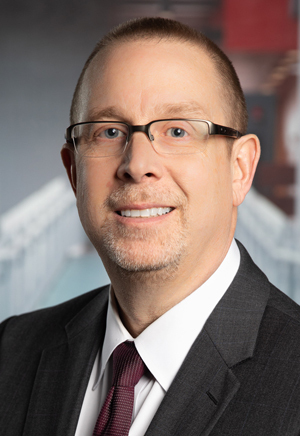
Robert Wiehe
Senior vice president, chief supply chain and logistics officer, UC Health, Cincinnati, Ohio
The Journal of Healthcare Contracting (JHC): What is the most challenging/rewarding project you have worked on in the last 12-18 months?
Robert Wiehe: I would have to say that my current role on the Perioperative Leadership Team has been the most challenging project I have encountered in my five-plus years in healthcare. The role has dictated that I immerse myself with the perioperative team and quickly learn from the subject matter experts the issues that we are facing as a system.
It has been rewarding in the sense that I have been able to learn from front-line staff, leverage the strong relationships that I have with our clinical chairs/physician group and bring a different skill set to the team to help lead improvement efforts in both efficiency and quality.
In many ways, we are using similar methodologies to what we use in Supply Chain by applying data and lean principles to develop interventions and solutions to problems. While the work is still underway, we have already started to improve utilization and expand OR capacity to help UC Health live into its purpose to advance healing and reduce suffering.
JHC: What project or initiative are you looking forward to working on?
Wiehe: Over the past two years, Supply Chain has worked hard to align with our physician partners and become “physician led and supply chain supported.” The integration between supply chain and our physician partners is one of the most important projects that we continue to evolve and grow. It is important that our front-line clinical staff views supply chain as a strategic partner who shares a common vision that focuses on our patients.
At the core of this project is lean principals, clinical informatics and relationships. We have invested heavily in the necessary resources to provide and use data to drive better decisions and focus on clinical quality and safety. Through transparency of data and inclusion in strategy development, we have built a strong foundation for the future.
We have had strong support from both the Chief Medical Officer and Chief Operating Officer; and continue to build trust and develop physician champions through our various initiatives. I am truly excited to see our collaboration and partnerships continue to grow and to see the benefits to our system and patients.
JHC: How are you better at practicing your profession than you were 5-10 years ago?
Wiehe: In addition to continual self-development and pushing myself to take on new challenges, I have a deeper understanding today of how diversity and inclusion can drive better results. As I have grown older, I have become more aware of the importance of deeply understanding and listening to various perspectives and how this can effectively drive performance improvement regardless of the project.
I also have a better understanding today of the importance of analyzing a situation and being flexible on what approach I may take. I am more comfortable today with being either a leader or sometimes a teammate based on what the situation dictates.
JHC: What lesson or lessons do you think supply chain leaders will take from the COVID-19 pandemic?
Wiehe: I think there are several takeaways that Supply Chain leaders will learn from this pandemic:
- Collaboration and communication with clinicians are critical to Supply Chain operations
- A deep understanding of clinical usage and patient population is necessary to improve demand planning
- Strategic partner communication about upstream supply risks is vital
- Community collaboration and coordination needs to be a part of the new normal
I’m proud to work for UC Health because as the region’s academic health system, we are a source of hope for all people, regardless of how complex the health challenge – especially during the COVID-19 pandemic.
About
Born in Cincinnati, Ohio, Robert Wiehe received his undergraduate degree in manufacturing engineering from Miami University in Oxford, Ohio, and his master’s in business administration from The University of Cincinnati. He began his career in the automotive industry as a project engineer and advanced through various leadership positions in the consumer goods industry, primarily focused on operations management and supply chain. He is certified in change management and is a six sigma lean black belt. Over the course of his career, Wiehe has managed global supply chains and numerous manufacturing facilities, serving as a supplier to companies such as Procter & Gamble and Wal-Mart. He has served on national boards of directors in the industry, and currently serves as an adjunct professor at Miami University where he teaches operations and supply chain management. At UC Health, Wiehe is the senior vice president, chief supply chain and logistics officer working as an integral leader in the operations team. Since assuming the role in June 2015, his responsibilities have expanded beyond Supply Chain to include managing Sterile Processing, Clinical Engineering and the Project Management Office. Recently, he has been assigned as the operations and logistics lead on a Perioperative Leadership Team tasked with improving Operating Room utilization and expanding capacity across the health system.
About UC Health
UC Health is an integrated academic health system serving the Greater Cincinnati and northern Kentucky region. In partnership with the University of Cincinnati, UC Health combines clinical expertise and compassion with research and teaching – a combination that provides patients with options for even the most complex situations. Members of UC Health include: University of Cincinnati Medical Center, West Chester Hospital, Daniel Drake Center for Post-Acute Care, Bridgeway Pointe Assisted Living, University of Cincinnati Physicians (includes nearly 900 board-certified clinicians and surgeons), Lindner Center of HOPE and several specialized institutes including: UC Gardner Neuroscience Institute; UC Cancer Institute; and UC Heart, Lung & Vascular Institute. Many UC Health locations have received national recognition for outstanding quality and patient satisfaction.
With more than 12,000 employees, it is one of the largest employers in Greater Cincinnati. And during the 2019 fiscal year, UC Health had 2 million visits and admissions from patients from all 50 states. UC Medical Center is also the region’s only level I trauma center for adults, and saw more than 121,000 Emergency Department & Trauma visits last year.
Learn more at uchealth.com.
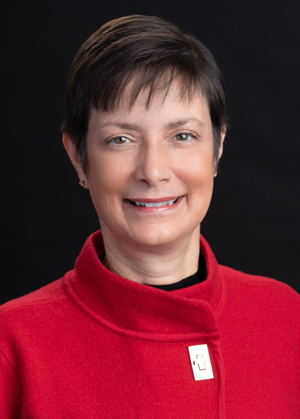
Susan Schrupp
Senior vice president and chief purchasing officer at Community Health Systems
The Journal of Healthcare Contracting (JHC): What is the most challenging/rewarding project you have worked on in the last 12-18 months?
Susan Schrupp: Responding to COVID-19 has not only been the most challenging project in the past 12-18 months, but also in my entire 28-year career in health care. CHS’ focus has always been to secure the supplies needed to protect our patients and staff, and that continues as our primary focus despite the challenges faced in Supply Chain.
Coming to CHS in the role of CPO and re-launching our Supply Chain has been rewarding and gave us a solid foundation for the COVID-19 response. The positive, collaborative spirit by our clinicians, hospital operators, IT, corporate departments, and executive team has been amazing. We’ve set our future vision and outlined key focus areas that include: execution of Clinical Initiatives, enhancing Data Analytics, refining Sourcing, restructuring our Supply Chain Operations, and implementing a single Supply Chain Platform. This is a multi-year journey and we have been highly centered on building the plan collaboratively, communicating our progress and performance, and engaging end users to build an intuitive high performing model. We are seeing a significant return on this investment and we will continue our journey focusing on having the right items, at the right time, at the right price.
JHC: What project or initiative are you looking forward to working on?
Schrupp: Upgrading our Supply Chain ERP system by moving to the Cloud. We have opportunities to improve our business processes for our hospitals and better leverage the collective volume of the organization. Making our procure-to-pay system more intuitive and efficient for end users to focus on the right cost management areas is key. Our partnership with finance operations and IT is imperative to modernizing our system.
JHC: How are you better at practicing your profession than you were 5-10 years ago?
Schrupp: I believe these areas are essential to continuous improvement in health care supply chain:
- Keep focused on clinical partnering.
- Communicate your plan and openly and routinely measure progress.
- Back assumptions with data. Provide access to data and collaboration with stakeholders
to achieve mutual goals. - Ensure incentives are aligned to move collectively in the right direction within your organization and your group purchasing organization.
- Keep the door open for feedback from leadership and your team members. I am thankful for honest, direct leaders that share what is on their mind and are engaged to make change and improve.
JHC: What lesson or lessons do you think supply chain leaders will take from the COVID-19 pandemic?
Schrupp:
- Be at the table with your leadership team.
- Keep a solid, collaborative relationship with your clinical leaders.
- Know your data and keep it orderly to be ready for planning and knowing where help is needed.
- Drive each day to leading a Supply Chain that is agile, efficient, and effective. Investments in standardization and documentation of key processes is a must.
About
Susan Schrupp, is the senior vice president and chief purchasing officer for CHS overseeing Supply Chain. Schrupp joined CHS in May of 2018 and has the responsibility for managing the procure-to-pay process for the health system’s spend of more than $4B annually in supplies and purchased services. Additional areas of responsibility include overseeing contract administration, lab and imaging service lines, travel, and biomedical engineering functions. Schrupp has over 25 years of experience in healthcare group purchasing organizations including Premier, Consorta, and HealthTrust Purchasing Group and executive supply chain roles with Catholic Health Initiatives and MNS Supply Chain. Schrupp holds a bachelor’s degree in health services administration and a master’s degree in business from Western Illinois University.
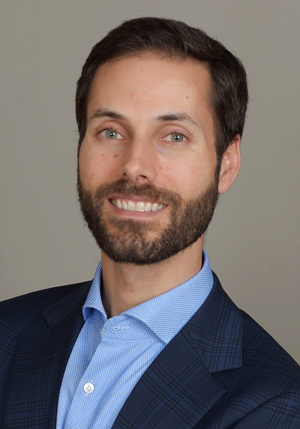
Brad Alexander
Vice president of business intelligence and performance for the resource, engineering,
and hospitality group, Providence
The Journal of Healthcare Contracting (JHC): What’s the most challenging or rewarding project you’ve worked on in the last 12 to 18 months?
Brad Alexander: It’s hard to answer that without something related to the COVID-19 crisis, which we’re still obviously in the middle of.
We were at the leading edge of the COVID-19 crisis here in Seattle. We had the first recorded case in the country. We had to quickly rethink how we do demand planning and forecasting, how we manage our supplies in the hospital, and how we maintain visibility over and ultimately control over those inventories. One of the first things we did was refine our LUM-based, point-to-point planning and distribution system – a major push for us over the course of the last several years. In certain categories we went back to a bulk hub-and-spoke, very tightly controlled, maximally transparent system – particularly for PPE and those other critical supplies. We brought all PPE back into stock rooms, increased the frequency of our cycle counts, and tracked all the transactions in and out of inventory.
Next, we built and deployed new tools in order to create visibility into those supply categories across all of our sites. This included our acute hospitals, but also clinics and long-term care facilities. Once we deployed those tools, our planners were able to work with ops and logistics leaders in the field to dynamically rebalance inventories across sites and regions in response to the evolving crisis.
Finally, we built a forward-looking predictive forecasting model to anticipate what our supply needs would be so that we could coordinate effectively with our sourcing organization and distribution partner. In June, we launched a formal MRP (materials requirements planning) process. Our planning team reviews the latest forecasts with ops and logistics and sourcing leaders, the team validates the forecasts, and based on those forecasts balances inventories and plans spot buys. Where markets are not able to meet demand, we actively work with our infection prevention leaders to design clinical protocols to align use with available supply as best we can.
It has been a big effort to deploy these processes and tools, but we are now in a much better position to respond to supply shortages. Looking back on my three years in supply chain here at Providence, this has probably been one of the biggest challenges that we’ve faced. We aren’t through it yet, but the way the team has responded is inspiring.
JHC: What project or initiative are you looking forward to working on in the future?
Alexander: We’re in the midst of a ERP transformation. Providence has grown over the years through a series of mergers and affiliations, so we currently have multiple ERP systems to manage supply chain operations and finance and HR functions across our various hospitals and lines of business. We’re going through a large-scale effort right now to consolidate those systems and migrate over to Oracle Cloud.
That’s going to be a multiyear effort. I’m really looking forward to using that as a platform to further modernize our operations and logistics functions. We’ve got a lot of transformation efforts that are tied to that project that we are running both in parallel with and as a direct result of that effort.
JHC: How do you feel that you’re better at practicing in your profession than you were 5-10 years ago?
Alexander: Two simple things stand out – more experience and greater technical background.
I’ve held a number of roles while I’ve been at Providence and it has given me an opportunity to see different parts of the organization. I’ve had finance leadership roles in our medical group. I’ve supported several of our service lines, namely cancer and digestive health. I led strategic analytics in our FP&A function. And now I’m with supply chain, which we call the Resources, Engineering and Hospitality Group. That diverse set of experiences I think has made me much more effective in my current role.
Historically, I’ve been more of a business finance analytics type person. I’ve got a consulting background prior to joining Providence, and the technical and platform aspects of my current role have forced me to increase my technical skills and capabilities. That’s one of the things I’ve enjoyed the most, and I’ve gotten a lot of value out of it in my current role. It’s really pushed our supply chain organization to a different level. The kinds of things that you are able to do with data and analytics, particularly in supply chain, and that we’ve had to do in order to manage a 51 acute care site organization effectively has really forced me to grow, and it’s taken our organization in a totally different direction.
JHC: What lesson or lessons do you think the supply chain leaders across the country are going to take from the COVID-19 pandemic?Alexander: A lot of our time and energy over the course of the last several years has been focused on operating efficiency and slimming down inventories, migrating to a LUM model and point-to-point distribution, and integrating more closely with our main distributor partner. We’ve used that philosophy and system to create more efficiency in the supply chain in general, but LUM is a much leaner model and doesn’t protect as well against things like pandemic shocks. So, as we evaluate that model, we’re increasingly looking at it as a spectrum. On one hand, you’ve got LUM that really maximizes operating efficiency but risks disruption in times of crisis. Then you’ve got bulk hub-and-spoke on the other end of the spectrum. That was one of the things that we had to recognize in initial days of the crisis. We had to switch from one model to the other for a host of categories that we manage. Being able to do that more dynamically and more quickly will be essential to manage future crises.
About
Brad Alexander is vice president of business analytics and performance for the resource, engineering, and hospitality group for Providence. Alexander has been with Providence since 2013. Before that, he worked as a management consultant for Camber Collective (formerly SwitchPoint LLC), and Deloitte Consulting, advising clients in the healthcare and life sciences industry.
